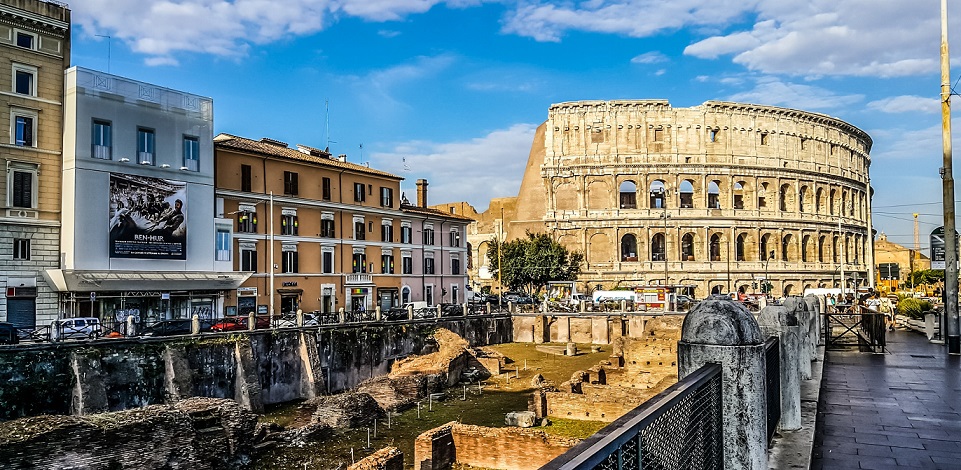What Are The Top Tourist Attractions in Rome?
Rome, the capital city of Italy, is one of the most popular tourist destinations in the world. Known for its ancient history, magnificent architecture, delicious cuisine, and vibrant culture, Rome has something to offer for everyone. From iconic landmarks to charming neighborhoods, there are countless attractions to explore in this fascinating city. Here are some of the top tourist attractions in Rome.
- The Colosseum
Undoubtedly one of Rome’s most iconic landmarks, the Colosseum is a symbol of the city’s rich history. This massive amphitheater was built almost 2,000 years ago and was used for gladiator fights and other public spectacles. Today, visitors can tour the Colosseum and marvel at its incredible engineering and architectural feats.
- The Vatican Museums and St. Peter’s Basilica
The Vatican Museums house some of the world’s most priceless works of art and artifacts. Visitors can explore the museums’ vast collections, which include paintings, sculptures, and other treasures from around the world. The highlight of any visit to the Vatican Museums is St. Peter’s Basilica, one of the world’s largest churches and the seat of the Roman Catholic Church.
- The Pantheon
The Pantheon is one of Rome’s best-preserved ancient buildings, dating back to the 2nd century AD. This temple was dedicated to all the gods of Rome and is famous for its magnificent dome, which is still the largest unsupported concrete dome in the world. Visitors can admire the Pantheon’s stunning interior and learn about its fascinating history.
- The Roman Forum
The Roman Forum was the center of political and social life in ancient Rome. Today, visitors can explore the ruins of this once-great complex, which includes the Temple of Caesar, the Arch of Titus, and the Senate House. A visit to the Roman Forum is a must for anyone interested in ancient history.
- The Trevi Fountain
The Trevi Fountain is one of Rome’s most beloved landmarks and a must-see for anyone visiting the city. This stunning Baroque fountain is located in the heart of Rome and is famous for its intricate sculptures and sparkling waters. Legend has it that throwing a coin into the fountain guarantees a return trip to Rome.
- The Spanish Steps
The Spanish Steps are another iconic Rome landmark and a popular spot for tourists and locals alike. This staircase, which features 138 steps leading up to the Trinita dei Monti church, was built in the 18th century and offers stunning views of the city.
- Trastevere
Trastevere is a charming neighborhood located on the west bank of the Tiber River. This area is known for its narrow streets, colorful buildings, and lively nightlife. Visitors can explore Trastevere’s many shops, cafes, and restaurants and soak up the neighborhood’s authentic Roman atmosphere.
Rome is a city that offers a wealth of attractions for tourists. From ancient landmarks to charming neighborhoods, there is always something new to discover in this fascinating city. Whether you’re interested in history, art, cuisine, or culture, Rome has something to offer for everyone.
What is The Best Time of Year to Travel to Rome Italy?
Rome, the capital city of Italy, is a popular tourist destination that attracts millions of visitors every year. However, the best time to visit Rome depends on a variety of factors, including the weather, crowds, and seasonal events. Here are some tips on the best time of year to travel to Rome.
Spring (March to May)
Spring is one of the best times to visit Rome. The weather is mild and pleasant, with temperatures ranging from the mid-50s to the mid-70s Fahrenheit (12-24 Celsius). The city’s gardens and parks are in bloom, making it a perfect time to take a stroll through the city’s many outdoor spaces, such as Villa Borghese or the gardens of the Vatican. Additionally, there are fewer crowds in the spring compared to the summer months, which makes it easier to explore the city’s top attractions like the Colosseum, the Vatican Museums, and the Roman Forum.
Summer (June to August)
Summer is a popular time to visit Rome, but it’s also the busiest and most crowded season. The weather is hot and humid, with temperatures averaging in the mid-80s to low-90s Fahrenheit (30-35 Celsius). The city can be overwhelming due to the large crowds of tourists, making it difficult to enjoy the city’s popular attractions. However, summer is also the time for many of Rome’s popular events, such as the Festa di Noantri in Trastevere or the Estate Romana festival, which offers plenty of outdoor concerts and cultural events.
Fall (September to November)
Fall is another great time to visit Rome. The weather is mild, with temperatures ranging from the mid-50s to mid-70s Fahrenheit (12-24 Celsius), making it a comfortable time to explore the city’s outdoor attractions. There are also fewer crowds than in the summer, making it a great time to visit popular sites like the Vatican Museums or the Colosseum. Additionally, fall is the time for many of Rome’s cultural events, such as the Rome Film Festival or the Chestnut Festival.
Winter (December to February)
Winter is the least busy season in Rome, and the weather is cooler, with temperatures ranging from the mid-30s to mid-50s Fahrenheit (1-12 Celsius). However, there are still plenty of things to do in Rome during the winter months. The city is beautifully decorated for Christmas, with lights and decorations adorning the city’s many landmarks, and there are many holiday events to enjoy. Additionally, winter is a great time to visit Rome’s museums and galleries, as there are fewer crowds and shorter lines.
The best time to visit Rome depends on your preferences and interests. Spring and fall offer mild weather and fewer crowds, making it a great time to explore the city’s outdoor attractions. Summer is a popular time to visit, but it can be crowded and overwhelming. Winter is the least busy season, but the weather is cooler and many attractions have shorter hours. Ultimately, the best time to visit Rome depends on what you want to see and do, and what kind of weather and crowds you’re comfortable with.

